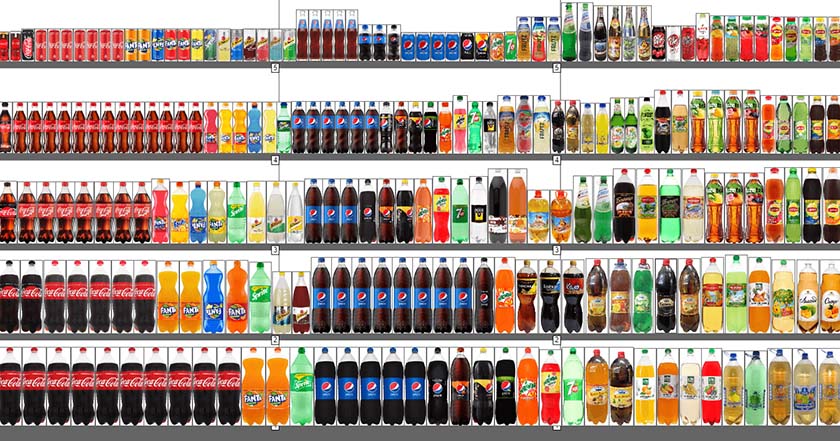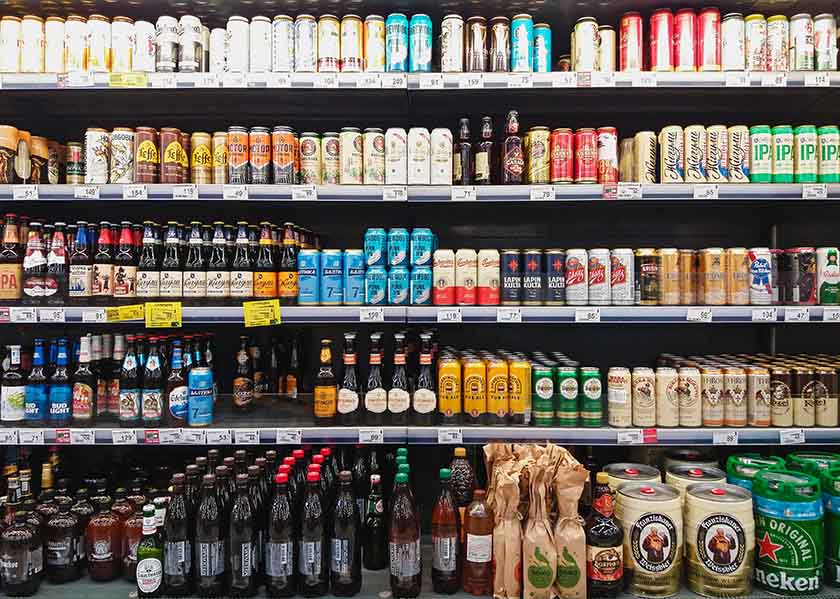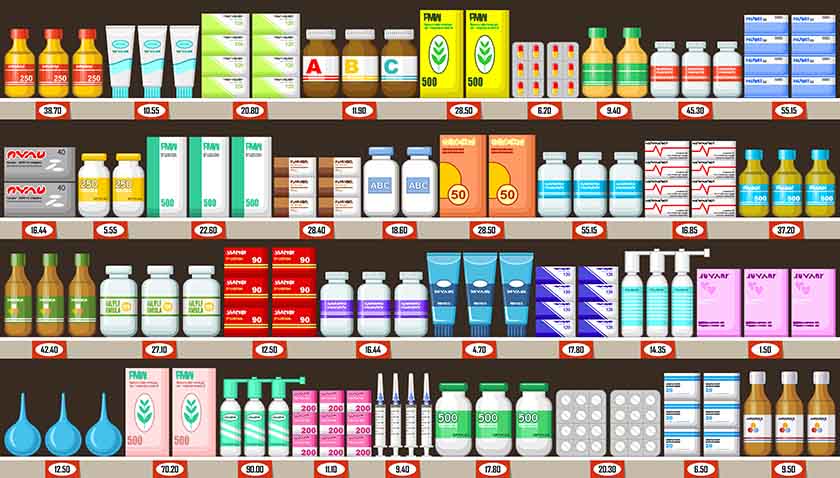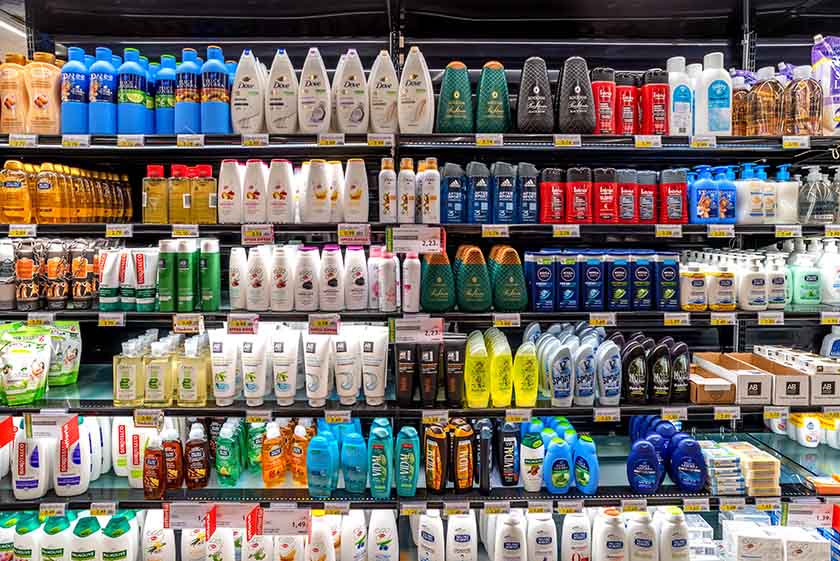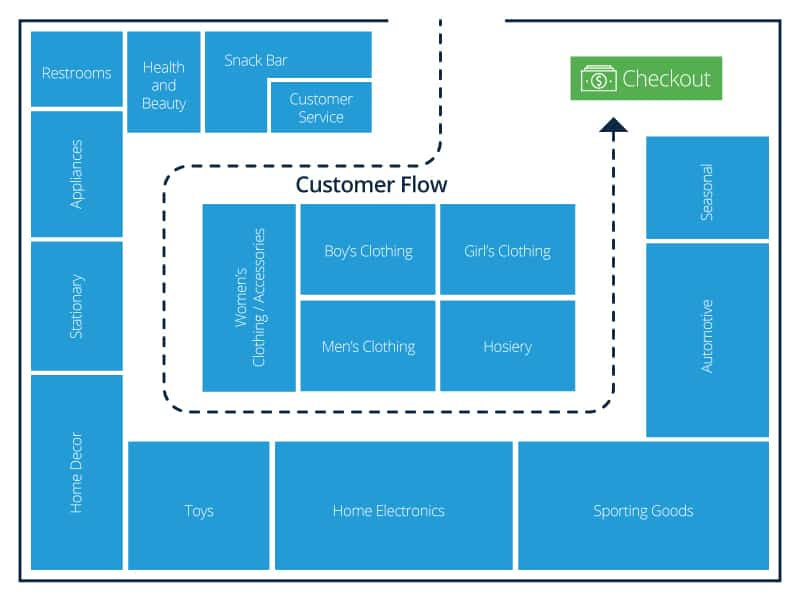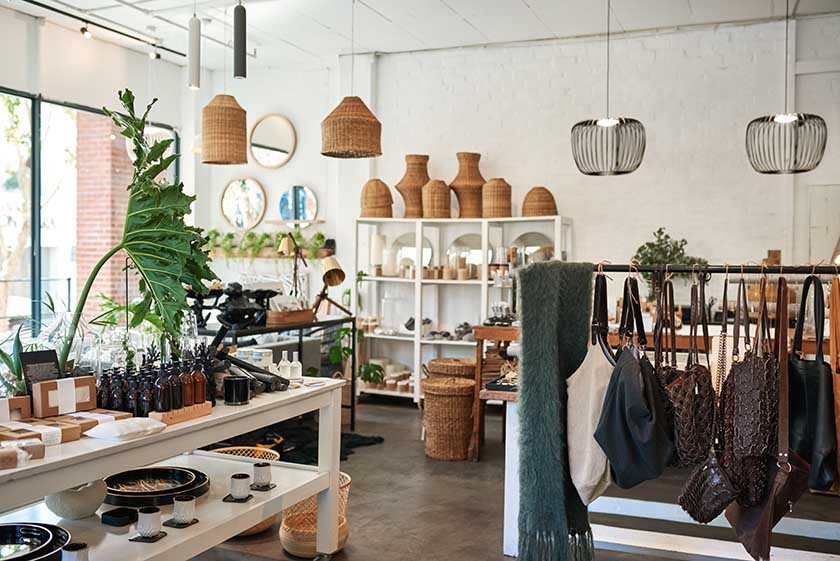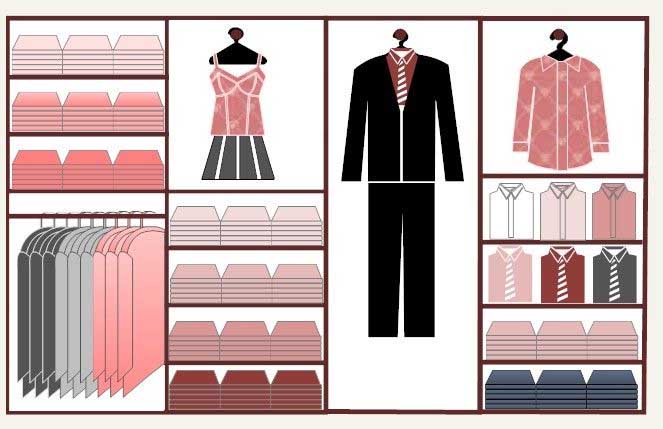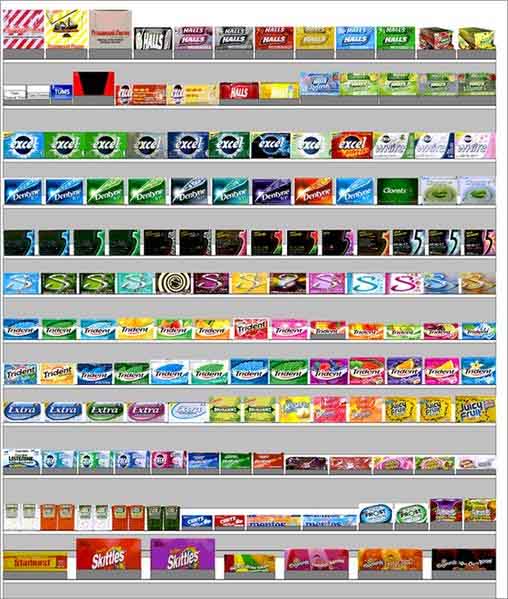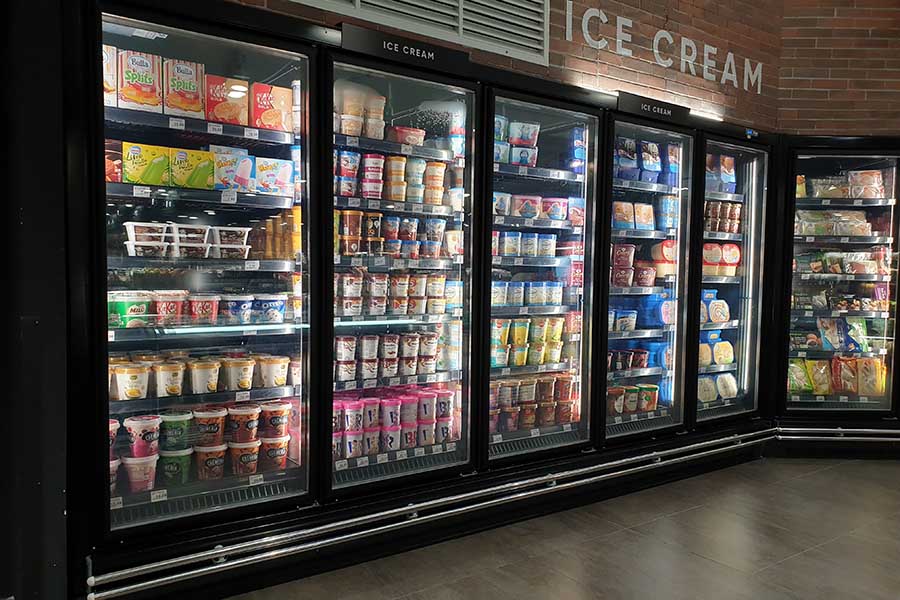In retail, a planogram is a schematic blueprint or model of a store that establishes where and how specific products should be placed to increase sales. It is completely to-scale and includes product categories, specific shelf placements, marks on where each display will go, the location of the cash wraps, and sometimes even decor elements. It also includes exact measurements for every piece outlined—and some are even so detailed as to include exact merchandising schemes.
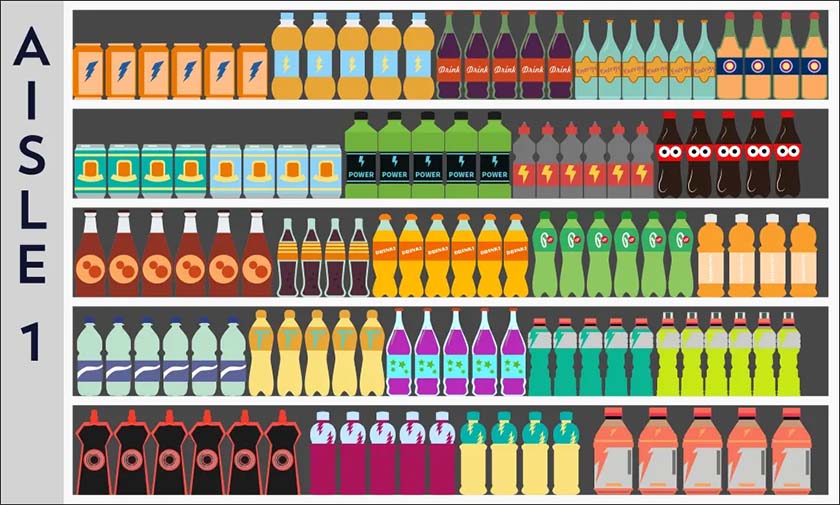
Planograms show where products should be placed in a store. (Source: Sales Force)
Planograms are used in both the planning of a store’s layout, as well as for when stores get redesigned or re-merchandised, such as for the change of seasons or addition of new product lines.
It is a great resource to ensure that your vision will actually work and that you are maximizing your space. Due to the level of detail, planograms are vital for retailers with multiple locations to create uniformity between their spaces and for accurately communicating with merchandisers and store managers to deliver and execute on your vision.
5 Types of Planograms
There are a few types of planograms that you can use in retail, and they each prioritize different objectives that are reflected in their design principles. When creating your planogram or working with a merchandising professional, you will want to be able to execute or communicate which type of planogram you want based on the type that makes the most sense for your business.
In a vertical product placement planogram, the same products from different brands are placed together on the same vertical shelf. For example, you might have a shelf full of laundry detergents from a variety of brands, organized on the same vertical shelf.
The brand of product that is the most popular should go at eye level. That way, the shopper-favorite is easy to find, and the familiar item is there to catch people’s eyes and make the section easier to locate.
The goal of this planogram type is to keep like products together so that shoppers can easily see all their options in one place. This scheme is ideal for stores that have lots of different options for the same type of product, like grocers, convenience stores, or hardware stores.
Similar to its vertical counterpart, in horizontal product placement planograms, the same products from different brands are placed together on the same horizontal shelf. For example, a drug store might place all their bandage options on the same horizontal shelves so they can fill the shelves above and below with other, related supplies like gauze, ointments, and ice packs.
On the shelves above and below the horizontally grouped products, place related items that complement the product.
This planogram scheme makes it easy for shoppers to see all their options in one place and is ideal for the same type of businesses that should use vertical product placement planograms—those that carry a variety of options for the same type of product.
This is a type of planogram in which related products are clustered into the same space. For example, a store might place all their accessories in the same area, including shoes, bags, hats, etc.
This type of planogram is great for stores that have a few large categories of products that they need to organize, like a clothing, toy, or home goods store. This type of planogram makes it easy for shoppers to find the area of the store they need while also promoting browsing.
In this planogram, you give the products that have the highest margins (i.e., the ones that will generate the most profit) the best product placement. This might be eye level on your shelves, in a display, in high-traffic zones, or in other areas where there is a lot of customer engagement and high visibility.
This type of planogram is designed to boost revenue by directing shoppers’ attention to items that generate the most revenue. It is best suited for stores that have a lot of different kinds of the same product by combining margin-based placement with vertical and horizontal schemes to determine where products go within a vertical/horizontal shelf arrangement.
Alternatively, it is also a good planogram type for stores that see a lot of browsing, as it will direct attention to specific products that generate profits.
For example, in my clothing boutique, we placed our more expensive pieces on table displays and mannequins at the front of the store, while our less expensive merchandise were on racks away from the entry.
Why Are Planograms Important?
It might seem like an unnecessary part of managing your store, but taking the time to draw up a planogram comes with lots of benefits, like:
- Driving sales: Creating a planogram forces you to be strategic with your product placements, consider your store’s flow, and make measured decisions with your merchandising. All of these considerations will help put the best products in front of your customers and create an engaging experience that will drive sales.
- Maximizing space: Taking the time to look at your store and plan out where everything will go allows you to maximize the space and get as many products on the floor as you can.
- Creating uniformity between stores: When your merchandising, layout, and product placements are all down on paper, you will be able to replicate your design across your stores and create a cohesive experience between locations. This allows for easier shopping for your customers and a strong brand image for your business.
- Simplifying merchandising: When you use a planogram, rather than winging your merchandising, you will have your plan down on paper, so you can simply follow the scheme you have laid out in advance. Not only that, you can give your planogram to a merchandiser to use as step-by-step instructions for merchandising your store.
- Increasing customer satisfaction: Using a planogram allows you to properly lay out your store for easy shopping and a logical flow. Planograms focus on putting your most desirable products in the parts of your store with the best visibility and accessibility. These efforts will facilitate an easier and more satisfying customer experience.
How to Create a Planogram: Planogram Solutions
Now that you have an understanding of just what a planogram is and all the benefits using the tool can bring to your business, the next logical step is learning how you can create one. In general, there are three routes you can take to make a planogram—go DIY, hire a professional, or invest in planogram software.
When deciding what kind of planogram method to use, consider how often you anticipate needing to make new planograms. Some stores make them multiple times a year for large merchandising initiatives, while others will only use them for their initial store design.
For small and medium businesses, the DIY or software options are going to be your best bet. For larger operations with extra budget, hiring a professional will be your best investment.
DIY Your Planogram
If you want to keep your planogram efforts free, then you can make a planogram yourself using tools you already have. Here are the steps you should follow to make a planogram yourself:
- Gather your measurements: This includes the dimensions of your store, all your permanent fixtures, your display pieces, and your racks—anything that will take up floor space in your store.
- Put your store to paper and arrange your fixtures: From there, draw everything you just measured starting with the basic outline of your store and then layering in your fixtures and other features into the space.
- Add your products: Next, add your product placements to your planogram. Since you are doing your planogram by hand, you will likely not be able to draw out every shelf and exact product location, and will rather zone your products into categories or draw in a block placement scheme, as in the picture below.
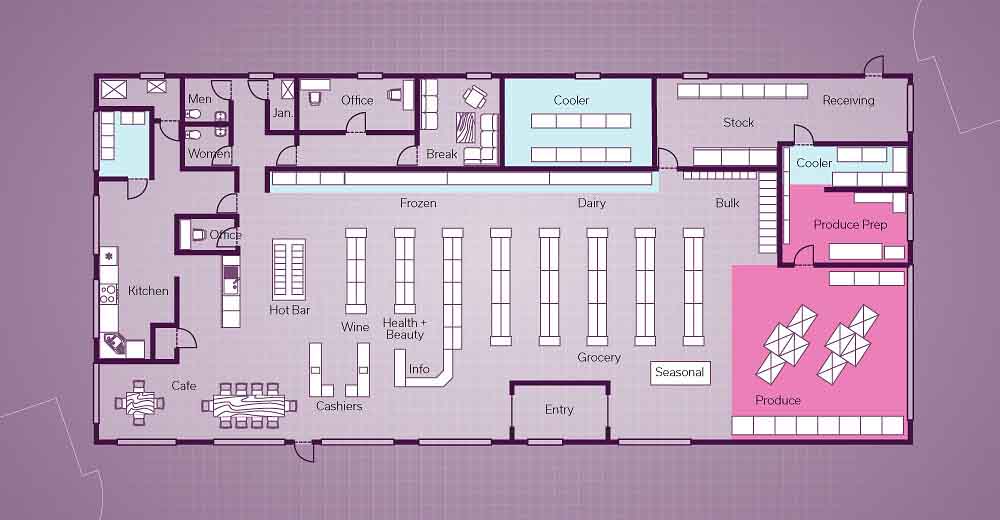
If you are doing a planogram by hand, you will likely use a block product placement strategy in your scheme. (Source: Synergy Codes)
- Bring it to life: Once you have your planogram to paper with all the details it needs, it’s time to bring your vision to life and execute your vision in your actual store.
- Analyze and update: From there, you should keep an eye on how your products are performing, if your customers are able to move through your store with ease, and whether your layout is directing shoppers’ attention where you want it to go. You can always adjust your planogram and analyze how different arrangements work until you find the best option.
Use a Planogram Software
The final option you have for creating a planogram is to use a planogram software. For a monthly fee (and sometimes even for free), you can invest in a planogram software that will allow you to create a detailed planogram of your store that includes everything, from an overview of your store layout to all your merchandising elements and each product’s unique placements. Some advanced options even use AI to help you maximize your space and product placements.
Here are a few resources to help you find the best planogram software for your business, large or small.
- Movista’s Best Planogram Software
- Leafio’s Best Planogram Software for Retailers and CPGs
- Geekflare’s Best Planogram Software to Optimize Your Retail Space
Hire a Professional
If you have some budget to spare or simply have too many stores to planogram yourself, you can consider outsourcing and using a planogram professional. Planogram professionals will not only create planograms for you and collaborate with you along the way, but many will oversee their execution as well. Here are a few resources you can check out:
Planogram Frequently Asked Questions (FAQs)
Click through the questions below to get answers to some of your most frequently asked planogram questions.
This is when the design laid out in the planogram is executed in a store. Planogram compliance is either performed by the store manager and their team, by a planogram professional, or by the store owner. Compliance is measured against the planogram by the store owner.
This is when a store reissues a new planogram because they are implementing a large change to the store’s layout, product arrangement, and/or merchandising scheme. You will often see planogram resets around the holidays or during a rebrand.
Store owners can make their own planograms by hand or using planogram software online or they can hire a planogram professional
Planogram merchandising is when you use a planogram or a schematic store drawing to show a merchandising scheme, like what pieces go where, what displays to use and where, layout changes, and any additional design elements.
Bottom Line
Planograms are a major part of starting a retail business and can help drive sales and maximize your space. While they can be tedious to make in the first place, planograms are essential to creating an engaging and optimized shopping experience for your customers and your business’s bottom line. With all the tools above, you are ready to start creating a planogram for your store and watching the sales roll in.
